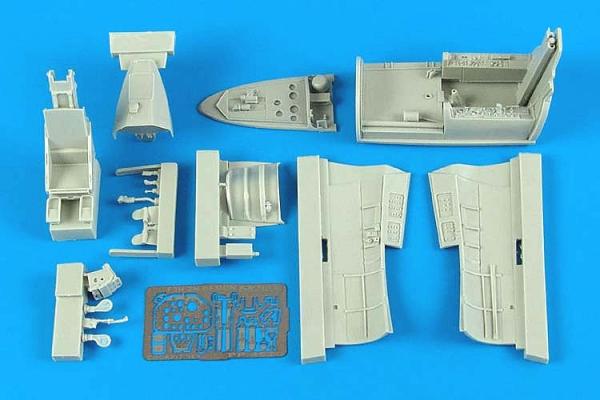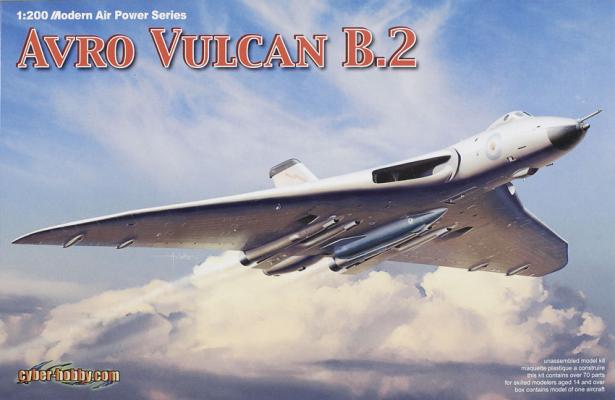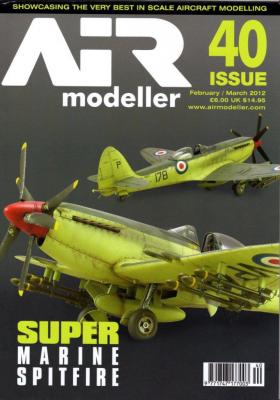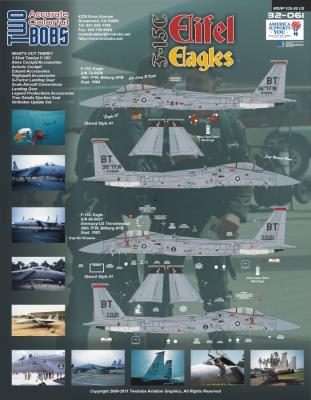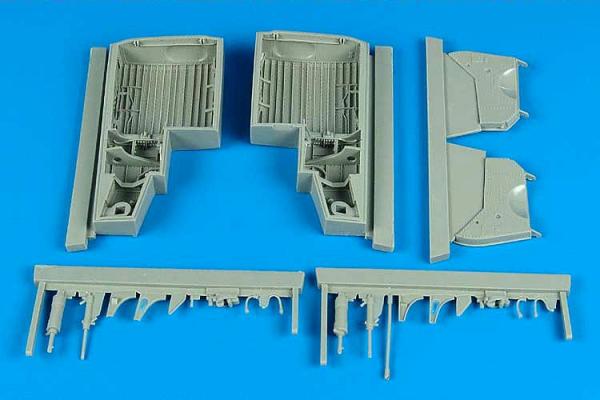Many modelers were excited with the release of the 1/48th scale Demon series from Hobbyboss, as the only kits available prior to this were limited run kits from Grand Phoenix, Collectaire, and a vacuform, too, I believe. For those desiring that extra shimmer to a nice kit, Aires has come to the rescue with five sets to add even more detail. The sets, prices and part numbers are listed below:
Welcome to the IPMS/USA Reviews site!
Introduction: The primary organization of the IPMS/USA Review website is by IPMS/USA National Contest Class. Within each Class there are sub-menus by kits, decals, books, etc. The Miscellaneous Class is for items that are not class specific or that cross two or more classes.
IPMS/USA Members: We encourage you to submit reviews, both here and to the Journal. To volunteer for membership in the IPMS/USA "Reviewers Corps" and submit your own reviews, please read the Guidelines For Submitting Product Reviews.
Manufacturers, publishers, and other industry members: IPMS/USA is pleased to offer your company the opportunity for product reviews. All product reviews are performed by IPMS/USA members, and are posted in the publicly-accessible section of our website. With very few exceptions, we perform full build reviews of new kit releases, aftermarket products, and supplies. If you would care to provide product samples for review, please contact John Noack, IPMS/USA 1st VP.
To learn more about IPMS/USA, please see our About Us page.
Dragon has started producing kits in 1/200th scale of larger planes. This is a great idea for those who want a replica of a specific plane but don't have the shelf space for larger kits. This issue is the Avro Vulcan B.2 and comes with three grey plastic sprues and one small clear sprue. Molding is excellent and there are a little over 50 parts and half of it is landing gear and wheels. There is the option to build in-flight or on the ground. Two sets of markings are provided:
This is a high quality magazine filled with high quality photos of extremely well done models. I have never found an issue of this magazine to disappoint and this issue is certainly no different in that regard!
32-061 $25.00
48-236 $20.00
First, sincere appreciation to our friends at Twobobs Decals for providing IPMS/USA these review items. These sheets provided impetus for me to finally properly build an F-15 from one of my old units. Twobobs have consistently filled a niche for decals previously unavailable from other sources.
Enclosed within the standard protective plastic sleeve are three decal sheets to mark F-15Cs from the 36th TFW at Bitburg AB, Germany accurately. Although this base is now closed, it used to be the hub of F-15 operations within central Germany. In my former life in the USAF, from 1988 through 1990, I was the F-15 Weapon System Maintenance Manager at 17th AF at Sembach AB, GE; we had to provide daily tracking and status of all our jets, as the “Cold War” was not so cold and we only had so many Eagles to fend off the Russian hoards… Was an interesting time, and I didn’t realize how good I had it.
This is a fine addition to the model maker’s resin arsenal by our friends over at Aires. It goes a long way toward addressing one of the weaker areas of many Thunderbolt kits.
The design of the original plane presents mold makers with something of a difficulty, given that the wheel wells of the lower mid-mounted wing extend into the fuselage. The fact that the wells on any P-47 model are eminently visible, and the full size version fairly complicated to boot, make matters more gnarly yet for the finesse- and detail-conscious modeler.











